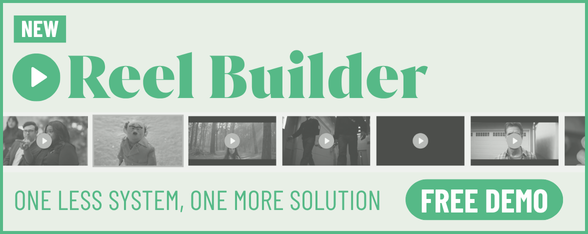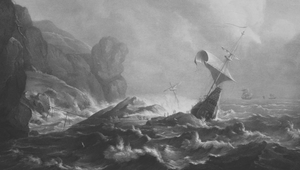
The Directors: Kyle Ruddick

Kyle Ruddick is a groundbreaking LA-based documentary director and experience designer repped by production and experience studio HELO.
He’s known for using emerging technology and cinematic visuals to tell powerful human stories. Kyle’s documentary feature, ‘ONE DAY ON EARTH,’ made history by filming in multiple countries on the exact same day. This project helped create both a global network of filmmakers and non-profits and a collaboration with the United Nations.
Currently, he is working on a documentary that investigates the impact of AI on humanity, incorporating artificial intelligence characters and other transformative AI technologies. As a commercial director, Kyle uses his expertise to portray authentic experiences and emotions in his work. He has worked with clients such as McDonald's, Lucasfilm, Minute Maid, Verizon, Anthem, Deloitte, Blizzard, Cheerios, 3M, EA, FanDuel, and United Airlines.
LBB> What elements of a script set one apart from the other, and what sort of scripts get you excited to shoot them?
Kyle> I always assess every concept from two perspectives: its relevance and its originality. I'm particularly drawn to ideas that are both relevant and original. However, something can't be merely original; it must resonate with an audience, connect with a story or a universal truth, or touch on an inherently human experience.
LBB> How do you approach creating a treatment for a spot?
Kyle> When developing a treatment for a project, my first step is always to reflect on how the idea relates to me on a personal level; then I expand my perspective from there. During the treatment process, I frequently find opportunities for prototyping, test shooting, or other forms of active engagement with what could eventually become that specific project. This approach allows me to incorporate something visual into the eventual treatment and deepens my understanding of how the actual mechanics of the project will unfold.
LBB> If the script is for a brand that you're not familiar with/ don’t have a big affinity with or a market you're new to, how important is it for you to do research and understand that strategic and contextual side of the ad? If it’s important to you, how do you do it?
Kyle> I consider myself a holistic director in that I need to research a brand thoroughly and its essence to fully engage with the story we're striving to convey. I prioritise ensuring there is complete alignment between the brand's narrative and the project at hand as I look for the connective threads that bind them together. Without this, I feel lost. I can't envision any other way to operate as a storyteller. It's crucial that we discern those universal truths and messages clearly right from the beginning before we delve into the project.
LBB> For you, what is the most important working relationship for a director to have with another person in making an ad? And why?
Kyle> It's challenging to single out one relationship as the most critical within the creative process. Of course, my creative counterparts are invaluable for brainstorming ideas and enhancing the quality of the project. However, it's equally important to acknowledge the significance of the relationships with the cast, the Director of Photography, and the producer with whom I work. Only when all these individuals align harmoniously does the true magic happen.
LBB> What type of work are you most passionate about - is there a particular genre or subject matter or style you are most drawn to?
Kyle> I find myself attracted to a wide array of projects. The universal criteria for me hinge on two questions: Does the work innovate somehow, and does it possess an emotional hook? While these might be broad qualities, they've steered me towards emotionally stirring projects and have even driven me to invent new technology to ensure the production's success.
LBB> What misconception about you or your work do you often encounter, and why is it wrong?
Kyle> One common misconception I often encounter is the tendency to typecast me based on specific successful projects. Due to my diverse body of work, people may perceive me differently based on the project they're most familiar with. For one project, I might be viewed as the director who excels at capturing genuine human emotions. At the same time, for another, I could be known as the innovator who employs artificial intelligence or other cutting-edge processes to revolutionise animation. In reality, my capabilities span a wide range of genres and techniques.
LBB> Have you ever worked with a cost consultant, and if so, how have your experiences been?
Kyle> While I may not be the best person to address this question, I understand the necessity of keeping projects within budget. If a project exceeds its budget, it simply cannot move forward.
LBB> What’s the craziest problem you’ve come across in the course of production – and how did you solve it?
Kyle> I've had to conjure a few miracles on set. Still, when I reflect on some of the more award-winning pieces, they often require me to either invent a new technology or utilise a prototype that deviates from the conventional production model. This approach has enabled us to accomplish feats that initially seemed impossible. For instance, with one project, we created a global online network with participants from every country in the world. In the commercial realm, inventing something innovative to make the project captivating is often half the battle.
LBB> How do you strike a balance between being open/collaborative with the agency and brand client while also protecting the idea?
Kyle> Striking a balance between openness and collaboration with a brand requires a particular skill in listening. Part of my initial process in personalising a project involves zeroing in on the core reason an idea works. Everything else around that core can shift and change, influenced by various participating parties. But as long as there's alignment with the idea's core between your team and those funding the project, things tend to flow more smoothly within the collaborative framework.
Frequently, I find myself needing to listen and ask: 'Am I holding onto what's truly vital for this project when presented with new ideas that I might not initially agree with? Or am I simply experiencing a momentary fear of losing control, which is unnecessary ego-driven anxiety?' A true leader listens, allows things to unfold, and doesn't feel the need to take credit for every development. The key role is to steer things back on track when necessary.
LBB> What are your thoughts on opening up the production world to a more diverse pool of talent? Are you open to mentoring and apprenticeships on set?
Kyle> I firmly believe that diversity is paramount in storytelling, depicting the world as we aspire for it to be and representing it as it exists accurately. However, there's a tendency to focus too heavily on someone's visual identity rather than their experiential identity. While both are important, the unique experiences that someone can bring to the storytelling process often prove to be the real diamonds in the rough. Furthermore, I'm dedicated to supporting and mentoring anyone who displays drive, has well-intended aspirations for their projects, and exhibits genuine excitement about the creative process.
LBB> How do you feel the pandemic will influence how you work in the longer term? Have you picked up new habits that you feel will stick around for a long time?
Kyle> The pandemic has normalised working from home. What used to be more of a hangout room in my house has now been fully converted into my office overlooking Topanga Canyon. While I suspect that we will rely on Zoom calls for some time, I deeply miss the experience of sharing a room with people.
LBB> Your work is now presented in so many different formats - to what extent do you keep each in mind while you're working (and, equally, to what degree is it possible to do so)?
Kyle> I'm accustomed to the norm of multi-modal work, where a project may include a long-form film, numerous short social media posts, a 60-second spot, and so on. Being aware of these deliverables during the treatment process is crucial. It allows me to reverse engineer, starting from the larger project and distilling it down to smaller components, ensuring we have a plan in place to deliver on all aspects of the production. While it's possible to address this as an afterthought and make it work, I find it beneficial to conduct a thought experiment during the writing process to ensure smooth execution.
LBB> What’s your relationship with new technology, and, if at all, how do you incorporate future-facing tech into your work (e.g., virtual production, interactive storytelling, AI/data-driven visuals, etc)?
Kyle> I've always been a very technology-forward director. This might seem surprising to some, but I started in this industry as a designer and animator, always looking for the latest software. As my career evolved and led me to work at Lucasfilm, this 'hacker' aspect of my identity continued to be rewarded. Sometimes, new technologies can offer fresh perspectives or approaches to traditional storytelling, and bringing these into the world is always thrilling. Currently, I'm actively experimenting with artificial intelligence to create synthetic characters, streamline editorial processes, and explore new animation techniques—all with the aim of expanding the range of narratives we can experience.















